Are you a Quiet Speculation member?
If not, now is a perfect time to join up! Our powerful tools, breaking-news analysis, and exclusive Discord channel will make sure you stay up to date and ahead of the curve.
Welcome once again to the Beginner's Guide. Back in May I laid out some basic rules and recommendations for how to construct a Modern sideboard. The intention was to provide guidelines for building a sideboard in Modern. The time has come to explain how it's actually done.
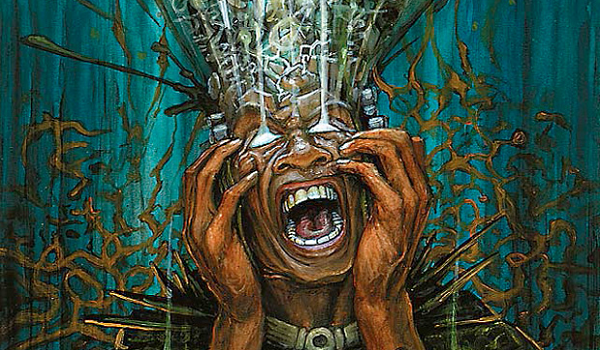
Everyone likes to complain about Modern. I don't understand why, but players just aren't happy with the format. People complain about its power level and the perceived non-interactivity. Nobody likes the ban list. Most confusingly to me, players seem to dislike the diversity. There are so many decks in Modern that you have the option to play what you want, and yet players don't like that they can't metagame against a Standard-sized field. In response some have called for more sideboard space to cope with this diversity. Honestly, what does everyone want?
I'm not sure what to do about the players in the first camp. Jund has been sitting at the top of our metagame chart since Eye of Ugin was banned. How much more fair and interactive can you get? If you want more control decks, then play them more instead of falling in with the aggro crowd. It can be done.
The last camp is the focus of today's article because those players seem to need this lesson as much as the new players. In Magic, diversity is something of an illusion. There are many different decks, but the deck types are limited. When confronted by Modern's diversity, stop focusing on the Standard strategy of preparing for each individual deck. This is Modern. Stop trying to beat individual decks.
[wp_ad_camp_1]
The Problem
Yes, you read that right: To properly build a Modern sideboard, stop focusing on how to beat individual decks. Down that path lies madness.
Go to the Top Decks tab. Look at all the decks we list. Imagine trying to build a sideboard against all those decks, piecemeal. You can't. The human mind simply cannot process that much data all at once. If you try to bite off too much at one time you just get confused and lost. Whether this is an academic research project or trying to determine which deck to play, you cannot process all the data at once.
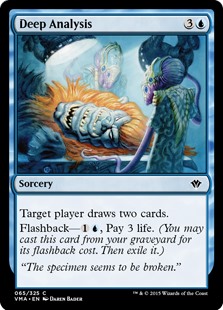 This is why data analysis exists. You have a massive table full of numbers and you cannot understand it. So you simplify and turn those numbers into an analytical readout of only a few numbers that describe the big set. Only then can you make meaningful decisions.
This is why data analysis exists. You have a massive table full of numbers and you cannot understand it. So you simplify and turn those numbers into an analytical readout of only a few numbers that describe the big set. Only then can you make meaningful decisions.
This is the problem that most players have in constructing Modern sideboards. The total Standard meta is about the size of Tier 1, many of which aren't serious contenders. As a result it's eminently possible to understand how the format operates in its entirety and make meaningful decisions without requiring any analysis and simplification. People try that in Modern and quickly find themselves overwhelmed---I believe this is the source of the sideboarding angst. It's not that they actually have too few slots, it's that they have tunnel vision. It's why I recommend against using The Elephant.
The Solution
You have to organize, simplify, and categorize to have any hope of drawing meaningful conclusions from extremely diverse datasets. This is where the broad categories I laid out last time are useful. It is impossible to prepare for every deck individually. Instead, you should select a small number of decks to specifically target, then prepare against the deck types that you're vulnerable to.
If this sounds confusing, don't worry, I'm going to walk you through the process in a moment. It makes much more sense when you see it action. What you're trying to do is cover your bases as much as possible by having a small number of powerful win-the-game buttons and then hedging against as many possible decks as you can. Will the end result be as powerful as when you tried to crush every deck? No. Will you have game against more decks? Absolutely.
To put it another way, you can build a sideboard that gives you a win percentage boost of 25%+ against four decks in Standard reliably, but in Modern that is impossible. What I'm advocating is that you try for that percentage against two or three decks, and use the rest of your space to improve 10% against the field. In such a diverse format you may give up a few dominating matchups, but you'll gain far more wins overall.
Building a Modern Sideboard
Anyone who hasn't read my previous articles on sideboarding and deck categorization may want to do so now. What I'm going to do is put everything I talked about there together and show you how to apply the principles by actually building a sideboard. If you don't know where I'm coming from this will make no sense.
If I'm going to build I sideboard, I need a deck. The deck closest to me at the moment is my build of Jeskai Control, so it will do.
Jeskai Control, by David Ernenwein
So we have our maindeck, now we need the sideboard.
Step One: Don't Concede to Affinity/Dredge
Always begin by making sure you don't just lose to these decks. If your maindeck beats one or both even after they sideboard then you can skimp. Otherwise, save the space.
Affinity
Game one is generally pretty favorable. As long as we keep a reasonable hand with removal we can attrition them down. The only thing we really need to worry about is Etched Champion with Cranial Plating. If they assemble that we probably lose unless Baneslayer can race them. We need to hedge against that scenario.
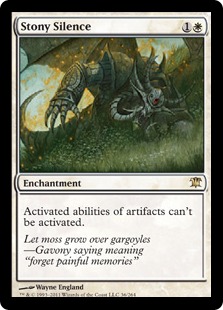 One option is to play no direct hate and instead play more removal. If you're going that route Supreme Verdict is probably the best option since Affinity sometimes plays Spell Pierce. A second is to play some general anti-artifact cards. Of the options available Wear // Tear is best due to flexibility. It pairs well with Snapcaster and can sometimes get an enchantment. The third is targeted anti-Affinity hate. We're in white so that means Stony Silence, which nicely shuts down a lot of that deck. The only problem is drawing it too late.
One option is to play no direct hate and instead play more removal. If you're going that route Supreme Verdict is probably the best option since Affinity sometimes plays Spell Pierce. A second is to play some general anti-artifact cards. Of the options available Wear // Tear is best due to flexibility. It pairs well with Snapcaster and can sometimes get an enchantment. The third is targeted anti-Affinity hate. We're in white so that means Stony Silence, which nicely shuts down a lot of that deck. The only problem is drawing it too late.
Once the options are laid out, we need to gauge how many slots are needed. Affinity is reasonably popular and we are reasonably good against it. We probably need 2-3 cards. For now, lets say a couple Stony's and a Supreme Verdict.
Dredge
Dredge is a bad matchup. Our one-for-ones are very ineffective. The only truly good cards we 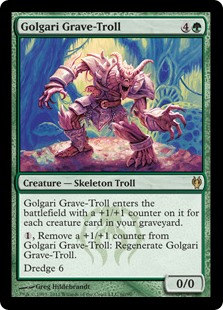 have are the Paths and Anger of the Gods. Anger is very good, but if they play around it or we never see it we have to race to win, and we are not good at racing. We need to prepare.
have are the Paths and Anger of the Gods. Anger is very good, but if they play around it or we never see it we have to race to win, and we are not good at racing. We need to prepare.
The best option is Rest in Peace. It's simple, powerful, and definitive. Dredge can work around the one-off effects like Relic of Progenitus or Tormod's Crypt much more easily. The problem is that RiP shuts off Snapcaster. That isn't so bad given that we will lose otherwise. I think this deck is pretty popular and we're bad against it, so pencil in another Anger and three Rest in Peace.
Step Two: Win Close Matchups
In my experience the fair decks and Burn are pretty close matchups for Jeskai. The mirror should also be included.
Fair Decks
All of these decks care about interaction and attrition. We should plan for attrition fights no matter which deck we hit, as well as the unique aspects of each deck. The best way to win an attrition fight is to draw more cards, and the cheapest way to do that is Ancestral Vision.
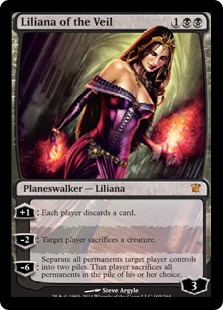 No matter the list, GBx matchups are about attrition and Liliana of the Veil. You will lose if she sticks in play, so we need a plan to beat her. Mana Leak is very good at that, but they're likely to bring in more discard to help stick threats. Our options are to remove her once she's in play or counter her. The counters that aren't Mana Leak are pretty specialized, and that's not optimal against discard. Thus we should focus on what happens once she hits play. Celestial Purge is the most efficient answer to a resolved Lili, so it gets the nod.
No matter the list, GBx matchups are about attrition and Liliana of the Veil. You will lose if she sticks in play, so we need a plan to beat her. Mana Leak is very good at that, but they're likely to bring in more discard to help stick threats. Our options are to remove her once she's in play or counter her. The counters that aren't Mana Leak are pretty specialized, and that's not optimal against discard. Thus we should focus on what happens once she hits play. Celestial Purge is the most efficient answer to a resolved Lili, so it gets the nod.
In the Jeskai mirror, game one is all about knowing Who's the Beatdown. If you have more answers, you are the control. If you have burn, you're the beatdown. Knowing when to fight over end-of-turn spells is critically important. You don't want to fight over unimportant life, but you also don't want to let your opponent pull ahead on damage and change the game into a race. The Jeskai mirror is hard.
 The most important cards in the matchup are all instants, so we really want Dispel. Actually winning the game in the face of lots of answers can be tricky, so in the past Keranos was used to win the mirror. The proliferation of Nahiri makes that a shaky strategy these days.
The most important cards in the matchup are all instants, so we really want Dispel. Actually winning the game in the face of lots of answers can be tricky, so in the past Keranos was used to win the mirror. The proliferation of Nahiri makes that a shaky strategy these days.
Grixis is a weird hybrid of GBx and the mirror. They have discard and big creatures like GBx with Jeskai's counters and burn. It's always an attrition fight, but you can race with otherwise mediocre burn thanks to their lack of lifegain, unlike Jeskai and GBx. Most of their important threats are black, so Purge might be a consideration. They have counters and we want to win that fight, so Dispel still shines.
Another thing to consider is changing the battlefield of the fight. Grixis utilizes its graveyard far more than Jeskai, so we might cripple them with Rest in Peace. It also hits a lot of Jund cards.
Burn
We deal a lot of damage to ourselves, and Burn takes advantage. Game one we need to avoid doing that as much as possible. 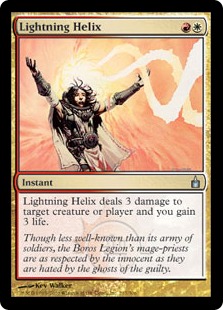 The normal strategy against Burn is lifegain. We already have a bunch of that maindeck between Baneslayer and Lightning Helix. Therefore we should focus on how Burn will board and counter that. Additional Skullcracks and Path to Exile are common, so we should have answers---the best one is Dispel.
The normal strategy against Burn is lifegain. We already have a bunch of that maindeck between Baneslayer and Lightning Helix. Therefore we should focus on how Burn will board and counter that. Additional Skullcracks and Path to Exile are common, so we should have answers---the best one is Dispel.
Taking all this together, to win my close matchups I want the maximum amount of Ancestral Vision, a couple Celestial Purges and 2-3 Dispel. If you're wondering about the meager space that leaves, don't worry. We'll address that in Step Seven below.
Step Three: Check Your Good Matchups
Non-Merfolk linear aggro, Abzan Company, and unfair combo decks tend to be favorable, so make sure nothing changes after sideboard.
Linear Aggro/Abzan Company
They play creatures, we play a lot of cards that kill creatures. As long as we don't fall too far behind or lose to a combo, we are favored to win. 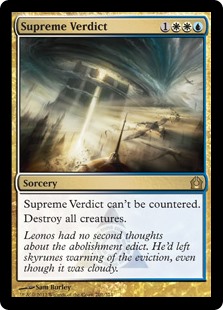 Wrath of God was the traditional way that control beat aggro. These days we one-for-one and then two-for-one using Snapcaster Mage. As long as we are able to do that we should be fine.
Wrath of God was the traditional way that control beat aggro. These days we one-for-one and then two-for-one using Snapcaster Mage. As long as we are able to do that we should be fine.
Anger is an excellent answer to most of these decks, though against Merfolk far less so thanks to Cursecatcher. Sweepers are generally pretty good in case we fall behind or our mana comes out awkward, so a few more wouldn't be unwelcome. Verdict is the most reliable option, though regeneration might get popular again one day.
Abzan is a problem because of its combo and Collected Company. Grafdigger's Cage is the best card against them. It isn't dead against Dredge, but it's less powerful than Rest in Peace. And as long as we don't lose to the combo, just playing sweepers should deal with Company well enough.
Unfair Combo
The truly unfair decks do not like counterspells. Or getting burned out while waiting to play around counters. We do both. Our only fear is Pact of Negation, and the Vendilion Cliques should help play around those and provide a clock.
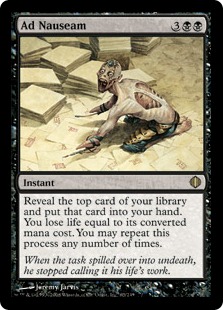 Ad Nauseam will sometimes bring in discard spells against our answers, but if we play enough we should be fine. Gone are the days when we needed to fear an end-of-turn Gigadrowse or Boseiju, Who Shelters All killing our counters, so a few more counters should be enough. Most of the key spells in every unfair combo are instants, so make sure we have Dispels at the ready.
Ad Nauseam will sometimes bring in discard spells against our answers, but if we play enough we should be fine. Gone are the days when we needed to fear an end-of-turn Gigadrowse or Boseiju, Who Shelters All killing our counters, so a few more counters should be enough. Most of the key spells in every unfair combo are instants, so make sure we have Dispels at the ready.
To make sure we don't lose our good matchups we should make sure we have sweepers and Dispels. A couple Verdict and three Dispels are sounding like sound investments at this point.
Step Four: Can We Win Bad Matchups?
Bant Eldrazi, Ramp, and fair combo decks are pretty poor matchups for Jeskai. Is there any way to change that and have it be worthwhile?
Bant Eldrazi
This is a hard matchup because most of our answers are poor. You can Bolt the birds just fine, but the Eldrazi themselves are pretty immune to fire. If they resolve it takes several of our spells to remove one of their creatures, nevermind the tokens. They win the attrition fight handily. Drawing extra cards is fine, but we only have so many answers to go around. We need to sweep them up, so we need to play Supreme Verdict. This matchup still won't be great, but now our answers won't be strained so much. Between counters, Path, and Verdict we have a much better answer suite to make the matchup even at the very least.
Ramp
Whether it's Tron or the RG Valakut decks, Jeskai never wants to see ramp. We play fewer counters than they play bombs, and if they go off with Valakut we just lose. These are hard. Against Tron we can pull it out if they draw only a few bombs and we can counter them or 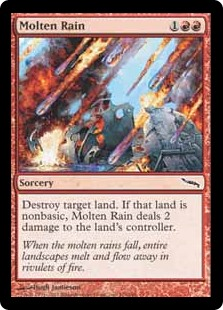 Path Wurmcoil Engine. If they start dropping Eldrazi we're sunk. Sometimes we can race the RG decks, but they're very fast and redundant. It's not likely.
Path Wurmcoil Engine. If they start dropping Eldrazi we're sunk. Sometimes we can race the RG decks, but they're very fast and redundant. It's not likely.
The most common way to fight Modern ramp is land destruction. Breaking up the Urzatron or slowing down Valakut is a very successful strategy when paired with a fast clock. Our clock is not fast. Yes, Crumble to Dust is powerful against both decks, but it hits after they've assembled their mana and started playing their threats. Molten Rain is an option, but the problem with single-use LD has always been that if you can't exploit the tempo it doesn't matter. I think we just have to write these matchups off. Stony Silence has some value against Tron so were not completely cold to them.
Fair Combo
Decks like Temur Scapeshift are tough. They have the same interactive elements you do, but they also have "I win" buttons maindecked (their combo kill). They can fight over our win condition, tap us out and then kill us. Like most combo decks, they do need to target us, so we could run Leyline of Sanctity. In addition to combo decks it also protects us from Burn. The problem being that if we go this route, we have to play all four. I dislike this option. We can simply play the counter game, use Clique to pressure their hand and life total and use Dispel to save Cryptic for the critical spell.
Merfolk
Jeskai does not like creatures growing out of Bolt range. It also does not like having to spend two spells to kill one creature. Merfolk does both and disrupts our mana. It also hates having its board swept. Anger can do the job, but to have a chance we need Supreme Verdict. A Verdict or two will go a long way.
Step Five: What Are We Still Vulnerable to?
So after thinking about our known matchups, we need to examine the field and the deck types and think about what hasn't been addressed yet.
Gotcha!
What first stands out are the Gotcha! decks. They often play like the linear aggro decks, but the speed and ability to win from nowhere make them far more dangerous. The other problem is that they play cards to protect their creatures, from actual protection like 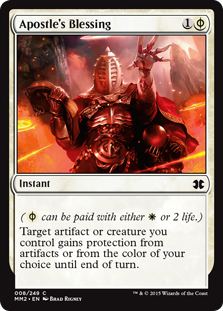 Apostle's Blessing to Mutagenic Growth growing creatures out of Bolt range. And then there's Bogles with its obnoxious hexproof creatures.
Apostle's Blessing to Mutagenic Growth growing creatures out of Bolt range. And then there's Bogles with its obnoxious hexproof creatures.
Blessed Alliance is a card that plays around a lot of these problem cards. The question is whether it's necessary. Dispel counters everything they play cheaply, and it's not that hard to play around sacrifice effects. I think our maindeck plan is good enough that a little bit of shoring it up should suffice. Dispel is good enough here.
Blood Moon
We're a three-color deck, and Blood Moon really hurts us. It is a reason to run Wear // Tear. However, Celestial Purge also works.
Step Six: Is There Anything Else We Can Cover?
We've got most of what we need to worry about done, so can we incidentally hit any other decks? At this point you should have hit most of Tier 1 and 2, so look at the bottom of 2 and into 3 and see if there's anything you can hit without actually dedicating slots.
 The one deck that I would actually put thought into is Lantern Control. We really struggle against that deck, which is not surprising. Lantern was built to beat slower fair decks. Dedicated Affinity hate really hurts it, but we don't have a lot of that since we're relying on our maindeck plan to win most of the time. Since we are vulnerable and Lantern does sneak in when you aren't looking, I definitely want an out or two.
The one deck that I would actually put thought into is Lantern Control. We really struggle against that deck, which is not surprising. Lantern was built to beat slower fair decks. Dedicated Affinity hate really hurts it, but we don't have a lot of that since we're relying on our maindeck plan to win most of the time. Since we are vulnerable and Lantern does sneak in when you aren't looking, I definitely want an out or two.
Another thing to consider are Delver-style decks. While not too popular, you do see them and we have some vulnerability to a fast threat backed by counters. Given the counters, I'd like to have a reliable way to clear the board and since Verdict can't be countered it seems like it should see play.
Step Seven: Put it All Together
So now we look through out list and pull out the cards that we really want. The cards we most consistently wanted across matchups are:
- Dispel
- Celestial Purge
- Supreme Verdict
- Ancestral Vision
In addition, we need our Affinity and Dredge hate, Stony Silence and Rest in Peace. Now we need to figure out the numbers. My initial reaction is that Dispel, Verdict, and RiP strike me as cards we really want, so they should be three apiece. Vision is one we need to have early, so it has to be a four. That's thirteen cards. Hmm. We need to rethink the numbers.
Dispel is very important in a lot of matchups. Verdict is reasonably important in a smaller number of matchups. RiP is critical in one and welcome in a few more. And we do have Serum Visions. I think we can cut a Verdict and a RiP.
This leaves room for Stony and Celestial Purge as two-ofs, producing the following sideboard:
Jeskai Sideboard
The Result
In the end I have four cards that are very high-impact in a couple of matches and eleven cards that are excellent across a lot of different matchups. You might not be playing the highest-possible-impact cards, but your average impact is much higher than trying to run a lot of fun-ofs. This way you are far more likely to actually see your sideboard cards and have more relevant cards against more matchups.
This is how I build my sideboards in Modern, and I find that it works very well. Note that there is some nuance that I'm skipping over to make this approachable for new players, but as always I'm happy to discuss questions in the comments.




First off, I found your previous 2 articles on sideboarding to be useful, and I have seen some benefit from a better devised sideboard as a direct result. I expect that information from this article will be similarly useful (and I think that many enfranchised players, such as myself, would benefit from re-examining such basic principles as well).
One thing that I’ve never been quite clear on is whether it is better to run a larger quantity of a few different cards (3 rest in peace), or a smaller quantity of a greater variety of cards in the sideboard (1 rest in peace, 1 kataki war’s wage, 1 disenchant). I’ve seen both appear in high performance decks, so there must be merit to either but I want a more concrete answer about why I would choose few cards or many.
I have heard the fairly convincing arguments for either style of sideboard, and I guess I should replicate them here. Advocates of the few card sideboard style suggest that by having more copies of a card the chances of drawing any copy of that card are higher, and then just running the highest impact card in a category will give you the greatest chance of success. Advocates of the more scattered sideboard style say that by running several different similar cards, you can gain an edge over different decks without losing relevance to any one deck. the example of this I always think of is that stony silence is better against affinity, but Kataki is better against lantern control, so even though both cards are relevant in both matchups, you can gain an edge by running a mix of the two.
is one view wrong? is there a correct time to use one type of sideboard over another? does it come down to preference?
Hey Josh,
In my opinion, I think it depends what deck you plan on building this sideboard for. Specifically, the less draw and filter your deck has and the less you plan to prolong the game, the more you should learn towards running a larger quantity of a few different cards. Modern is known for being blindingly fast even between two fair police decks, so you really can’t count on the natural speed of any game to be more than five or six turns (it may run longer than that, but it’s not something you can bet on for purposes of deck construction). With that in mind, you want to see your sideboard cards in the first twelve or so cards if you really need to see them. If you aren’t filtering or drawing a lot of your deck, that’s not really manageable by playing singleton cards. The potential benefit of one card being slightly better than another versus a given matchup is overshadowed by the sheer lack of chance to draw into it. It’s better in this case to know exactly what you can expect to draw from your deck to tighten your plays and end the game. My burn deck sideboard is filled with three-ofs for this very reason.
By contrast, if you’re playing a deck that plans to see more of its deck, either through prolonging the game like the Jeskai control deck David used in this article, or by filtering cheaply and quickly a la Dredge or Grixis Delver, you can afford to play two-ofs or 1-1 splits. For prolonging decks, this is because your deck is dedicated to lengthening games, and so you can more safely plan to go beyond turn five or six. This in turn naturally increases the chances that you’ll see the more specialized card in your sideboard. For filtering decks, this is because your deck is dedicated to going through your deck at a faster-than-normal rate, and so you can more safely plan to see more of your deck than normal by turn five or six. While each deck style goes about it a different way, they both plan on seeing more of their deck than “normal”, and can draw into their specialized cards more often enough for it to matter.
Noah has the accepted wisdom exactly. Fair decks with card draw can afford to run more specialized cards in smaller numbers than decks that lack filtering. Decks with lots of tutors can run singletons exclusively.
From my perspective, I prefer to minimize variance as much as possible and I also believe that your sideboard is to precious to overspecialize. That’s why I tend to prefer Stony Silence, which hits many decks, rather than Kataki which mainly hits Affinity. However, I often find in the tuning process that I can deviate and play some 1-ofs once I have a better understanding of the deck and its matchups.
To answer your question, I don’t think that one is “better” than the other, but the latter option requires more experience than the former. There’s more to go wrong when you add in more options, so I advise sticking to the former option and maximizing one card for the first few iterations of your deck and only branching out once you’ve built enough experience.
This was a really interesting read, David. If you keep writing on sideboarding, I’d love to hear your thoughts on when decks incorporate SB plans independent of targeted answers in the Modern context.
Can you clarify what you mean? It sounds like you’re asking about transformative sideboards in Modern.
Yes, I mean transformative sideboard plans. Generally, when I consider transformative SB plans, I’m looking at no more than 5-6 cards in the SB (4 if I can get it to work) that grant me a new angle of attack that also addresses a weakness in the maindeck plan. My two go-to examples are sideboarding Smallpox and Life from the Loam into Obliterock (though Delirium Jund looks like a much more suitable home for that plan) or sideboarding Young Pyromancers in UR/x decks. I’d be curious when, on balance, a deck would want a transformational plan more than, or as much as, the given silver bullet Modern sideboard plans that are more common.
I covered transforming here. The short version is that you should transform only to avoid hate cards and only if you don’t have to dramatically change your deck to do it. The examples you cited are good examples of when it’s done well and I even use the Pyromancers in the article.
Didnt find this that helpful in aproaching modern sideboards. If youre trying to simplify shouldnt it be more like: some gy hate, some artifact hate, some aggro hate, some attrition hate and some combo hate? Then because you have 15 slots you try to overlap where possible – ie leyline could stop combo and burn and has value vs midrange, anger can stop grave and aggro, stony stops affinity lantern and hurts tron a bit.
This felt like a deck by deck walkthrough and then random conclusion on which cards to actually play
Also depending on your deck there may be specific cards you need a plan to beat – ad nauseum needs a plan for leyline of sanctity, valakut needs a plan for blood moon, affinity needs a plan for stony silence, and most creature decks need a plan to beat ensnaring bridge or worship. Sometimes your plan is to just lose to it because you dont expect it to come up but if you walk in with zero answers to enchantments that better be a concious decision to not interacting with rest in peace, leyline, worship, etc.
Similarly some decks require very specific interaction – boggles comes to mind. Do you use runed halo? Do you use engineered explosives? Do you use blessed alliance? The specific pick is hard but the principal should be that you either have a plan to deal with it or you’re ceding the matchup.
The art of sideboarding is optimizing the 15 to hit hard enough in enough matches to be effective. Identifying options is more or less a cakewalk but narrowing it down is where things get complicated – so again I just didnt finish your piece here with a good sense of how to strategically pick cards but rather some fairly arbitrary choices for one specific deck (ie why no detention sphere? Why no pithing needle? Why no disdainful stroke or negate? Why no timely reinforcements? )
There are so many options that it is hard to narrow it down – but thats kind of the whole thing that makes sideboards in modern hard in the first place – tips for newbs should somehow streamline the decisions or simplify them (a good tip you had was dont cede affinity or dredge)
The intention was to take the principles from my previous articles and then apply them on an initial sideboard build. This was why I didn’t just throw in stuff for each category and instead asked what cards I actually want to see in a given matchup and tried to extrapolate out from there.
This article felt a little weird. It started off by making a really good point about wanting to target themes/strategies rather than individual decks, then went on to give an example in which every decision was targeting individual decks. Did I miss something? Maybe I missed something.
I was applying the lessons from my previous articles. You start with the broad archetypes and then focus in on specific decks from Tier 1 and upper Tier 2 as you need to rather than actually target every individual deck. I think in retrospect I was too subtle about this point.
Hi I like your side boarding guide and how to build one. I read from previous articles on adjusting tempo, something like a transformational sideboard. Currently I am trying this strategy for my skred red deck and it seems effective. There is also sideboard against specific cards which are more for linear deck. Will you be touching on these in future articles as well? I will be interested to read up on them and improve my sideboard strategy. Keep up the good work.